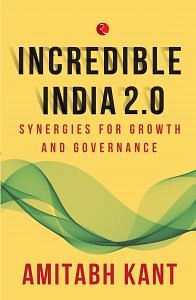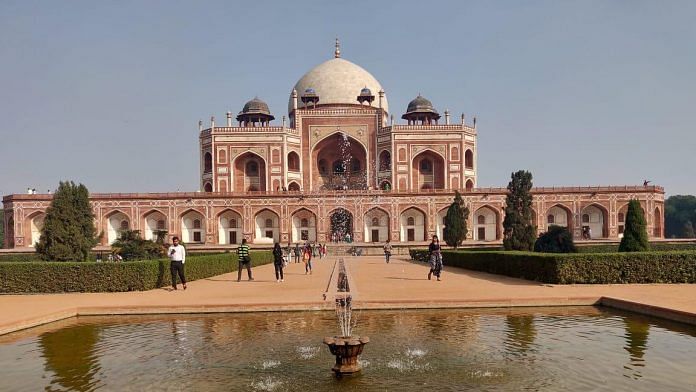India, with several millennia’s history, boasts of a diverse and rich heritage. Each region of our subcontinent, without exception, boasts of monumental buildings and remarkable archaeology. Yet, less than 15,000 monuments and heritage structures are legally protected in India—a fraction of the 600,000 protected in the UK.
Even those structures which are considered to be of national/state or local importance in India and protected as such remain under threat from urban pressures, neglect, vandalism and worse, demolition, only for the value of the land they stand upon. This poor state of preservation of a large part of our national heritage is a result of the inability of those entrusted with their management to unlock the economic potential of these sites and demonstrate that conservation effort can lead to meeting development objectives in the most sustainable manner.
The first step towards this would be to ensure that visits to monuments and archaeological sites are exciting for both local residents and international visitors. Following decades of effort, we, in India, boast of several thousand sites, contemporary and even grander to the well-known Mohenjo Daro and Harappa.
India has 34 UNESCO-designated World Heritage Sites—only a handful of countries have more. Lack of effective management and presentation, however, results in most archaeological sites being inaccessible to the general public or not being richly experienced. It is required, even for sites such as the Taj Mahal, that the cultural context and intangible heritage—music, food, ritual, dress, personalities, festivals—associated with the sites is explained to the visitor.
Cultural events that would usually attract large numbers should be organized at lesser-visited monuments and heritage enthusiasts should be encouraged to buy annual passes that allow unlimited visits. Funds spent on introducing such measures and facilities will quickly yield rich dividends.
Also read: Adopt-a-heritage: Controversial Dalmia deal to adopt Red Fort put on hold
In some states, notably Rajasthan and Telangana, efforts have been made to encourage ‘adoption’ of monuments for their management and maintenance. If we are to pass on to future generations our heritage in a better condition than what we inherited it in, there needs to be liberalization in the cultural sector and responsibility should be entrusted to private entities, schools and universities, non-profits, and resident welfare associations.
Responsibilities can go beyond maintenance and cleanliness with non-governmental partners engaging the specialists required and the government agencies supervising the effort to ensure that highest standards of conservation are achieved for these irreplaceable assets. With CSR (corporate social responsibility) funds entitled to be spent for conservation, finding required funds should be possible.
Heritage buildings everywhere utilize local materials and local communities hold the traditional knowledge to work with these locally available materials. Obviously, any conservation effort then has to source locally, creating employment and economic opportunities. Many Indian Maharajas commissioned forts, palaces and temples in times of drought as a lifesaving economic incentive for the populace.
‘Make in India’ objectives will thus be met by any well-planned and implemented conservation effort while simultaneously creating an economic asset that continues to pay rich dividends for years to come. Only a limited number of heritage buildings are tourist attractions. For the rest, new functions need to be incentivized and planned.
Most of the 600,000 protected heritage structures in the UK are in private management and as historic buildings are considered better built, they command high premium. Adaptive reuse of heritage buildings in Europe has ensured that several churches—fallen into disuse—have been converted into unique experiential tourism. We need to incentivize private conservation and preservation works. Property tax waiver, permission for change of land use and transferable development rights are amongst other incentives owners of heritage buildings or those residing within the 100-m ‘prohibited zones’ of nationally protected monuments could be receiving.
Also read: Why Delhi’s grand monuments will always remember young archaeologist Gordon Sanderson
Besides use as hotels or museums or libraries, heritage buildings or monuments could also easily be adapted to serve as schools, lending economic value to the local communities. It is always cheaper and easier to convert a building than build afresh, while also representing a higher aesthetic and building quality. To be meaningful, conservation works at our national and local heritage sites should go beyond the fences erected around these sites by the British in the nineteenth and twentieth centuries.
Conservation works need to be coupled with urban improvements, improved transport infrastructure, providing economic opportunities, improving health, education and sanitation infrastructure. Only then will the heritage assets be valued by those inhabiting around them. Conservationists have often expected local communities to contribute towards conservation effort while not offering any incentives and imposing heavy restrictions; such an approach is never likely to succeed.
One of the world’s most frequently cited conservation success stories has resulted from the non-profit partnership established by the Aga Khan Trust for Culture with the Archaeological Survey of India, Central Public Works Department and the South Delhi Municipal Corporation in the Humayun’s Tomb, in the Nizamuddin area of Delhi. Here, over a ten-year period, conservation works have been undertaken on over 40 structures, leading to a tenfold increase in visitor numbers and a two-fold expansion of the World Heritage Site to include 11 monuments in addition to Humayun’s Tomb.
The Aga Khan Trust for Culture has assisted the Archaeological Survey of India to take ownership of an additional 35 acres of land—freeing it from encroachment and implemented landscape restoration at these monuments—by planting over 10,000 trees in the process.
Also read: Humayun, Safdarjung tombs in Delhi among 10 monuments that will now remain open until 9 pm
As conservation work requires 500,000 days of work for craftsmen, a strong case has been made for making conservation work eligible for MGNREGA funds. As a result of this partnership project, over 20,000 inhabiting the adjoining Nizamuddin Basti today have an improved quality of life resulting from street improvements, landscaping of neighbourhood parks, building of community toilet complexes, improved primary education and providing health facilities that have been used by over 400,000 from citywide location. Emphasis of the Sufi cultural legacy through cultural performances and exhibitions has also instilled a sense of pride in the local community. These efforts have a significant economic impact—locally and citywide.
Providing appropriate vocational training has meant thousands of jobs and economic opportunities, for example, selling of souvenirs crafted by the women in Nizamuddin. The successful implementation of this urban conservation and development effort has resulted from corporates, national and international trusts, government agencies, public sector entities, academic institutes partnering the Aga Khan Trust for Culture in this effort.
With limited human resources available to government entities mandated to implement urban improvement and conservation projects in our historic city centres, similar partnerships need to be established. Just as anywhere else in the world, our heritage can be leveraged for economic gain through tourism earnings as well as opportunities for craftsmen and local communities.
 This excerpt from Amitabh Kant’s Incredible India 2.0: Synergies for Growth and Governance has been published with permission from Rupa Publications India.
This excerpt from Amitabh Kant’s Incredible India 2.0: Synergies for Growth and Governance has been published with permission from Rupa Publications India.




IMMENSE potential for employment and Forex earnings – given our vast history – surprising why states do not take it with a missionary zeal – we can be the most visited tourist destination globally as a person can experience all the possible world conditions in one country.
Someone looked at holistically…..States and pick and implement….I could related my recent trip to Mysore – exploring Mysore 4 varieties of masala dosas, mysore silk, Mysore Pak etc….